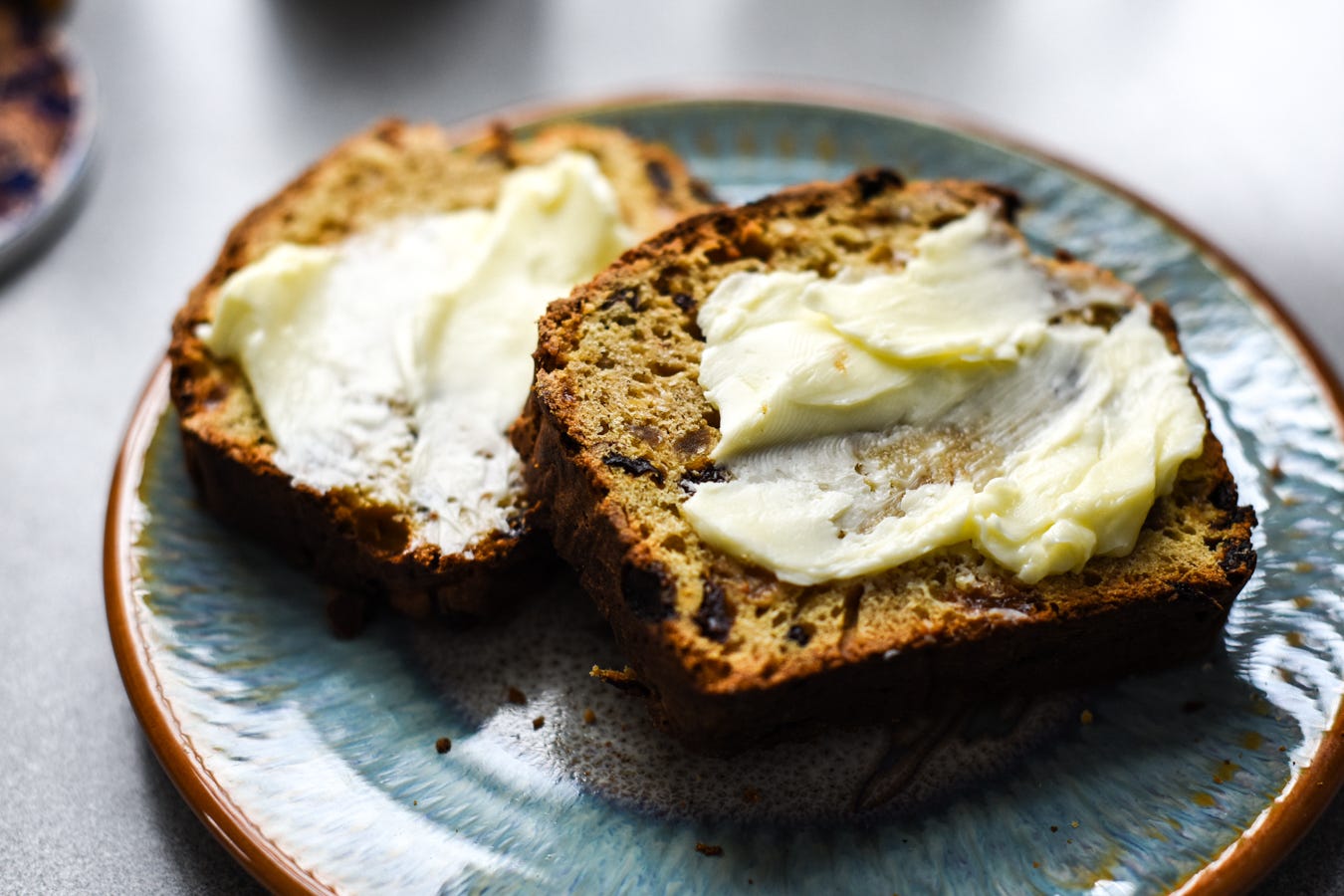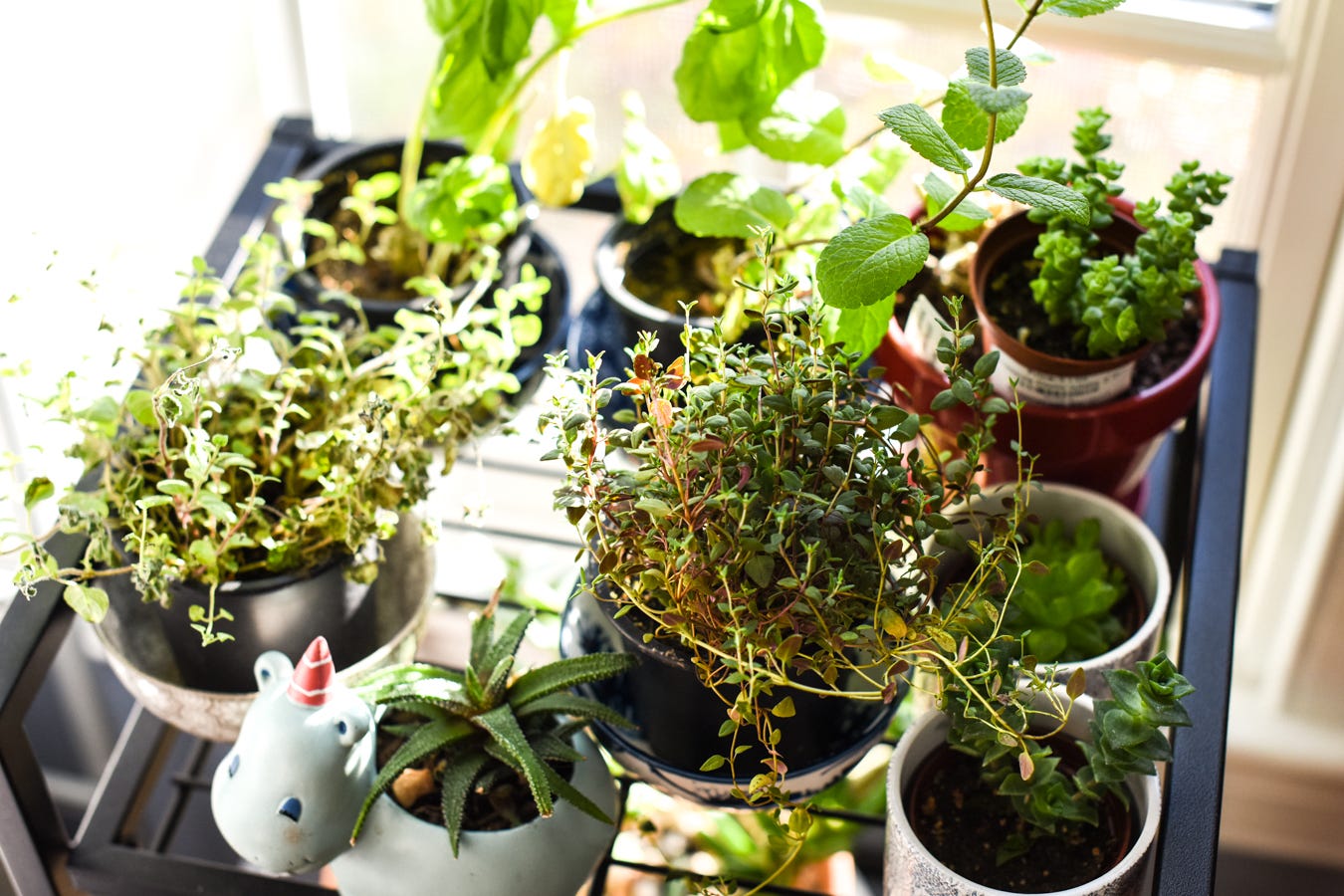This is a continuation of my Lenten discipline of pondering the question of ‘what is necessary?’, outlined in my first essay newsletter.
March 1st was St. David’s Day, the 6th century Welsh bishop turned-patron saint of Wales. For a member of the Anglican Communion on this side of the Atlantic, St. David’s Day is not widely observed, and so when an antique bulletin fell out of an antique book during my library work several years ago, I was delighted to learn about a saint who is so important to my Welsh friends.
St. David was a teacher, and monk, who founded many monasteries including (as his biographer Rhygyfarch would have you believe) Glastonbury Abbey. He also championed a particularly austere form of life, including forbidding farm animals to pull the plow (leaving few options but one’s fellow monk!) and mandating only bread and water for his followers. Thus, it seems kind of ironic that the bread traditionally eaten on St. David’s Day in Wales would be too luxurious for its patron saint. Bara brith (literally, “speckled bread”) is a dark currant loaf. It is less bread, and more dense cake—like a traditional English tea loaf, but most often made with yeast (while its English cousin is not yeasted).
In a belated honor of this day, I made bara brith again. My current cookbook obsession is Regula Ysewijn’s The British Baking Book (in the UK, Oats in the North, Wheat in the South). Written by a Belgian culinary historian, the cookbook recovers old recipes for traditional British baked goods of both the sweet and savory variety. Thus far, it has been a fun adventure to bake through, and I can’t wait to get going on a few new recipes I’ve earmarked. Bara brith, however, I’ve made multiple times—perfect for morning toast or afternoon tea. It is becoming a baking home to return to, one of the cornerstones of this book for me.
While I will link to the recipe further below, I’m slightly more interested in how our liturgical history and food history are linked. St. David’s Day reminds me of the numerous other food traditions that are linked to holidays across the year—from corned beef and cabbage on St. Patrick’s Day to painted hard-boiled eggs at Easter to cookout faire during summer long weekends/holidays (like Memorial & Labor Day, July 4th) and turkey at (American) Thanksgiving. While I grew up eating closely with the seasons due to farm life, we always had an abundance of meat since it was one of the products of said farm. But what truly radicalized me into seasonal eating—something that my unconventional farm upbringing had perhaps prepared me for—was living at SSJE for a year as an intern, eating according to the liturgical calendar. There was always a great deal of food around, but we ate mostly vegetarian during the week, in silence. Feast days, like Sundays and saint’s days, included meat and dessert. High holy days (‘Solemnities’) like Christmas, Easter, Pentecost, etc, were basically a party.
It feels relatively normie to simply use this as an occasion to say that Christians should eat like this more (though I do think ordinary Christians in a liturgical tradition might find it beneficial to adopt this as a way to bring the feasts and fasts of the church into their own home). But this idea of structured, intentional eating—moderated consumption—takes on new meanings in a world where we are really just beginning to grapple with the extent to which global warming and more frequent extreme weather events will reshape daily choices that we must make around health, transit, and yes, food. I think that in the coming months and years, our changing consumption patterns (whatever they may be), if they are to be sustainable and make a difference ecologically, may look more communal than individual.1 And while I’m no optimist about human behavior and the western world’s ability to move beyond individualism, my experience of living in community with those who have made a conscious choice around eating (and living more widely) gives me hope.
Perhaps then, as we live in the weeks beyond St. David’s Day and in Lent, we may take St. David’s own asceticism to heart, paying heed to what patterns of (food) consumption may require pruning and new intention.
Happening this Week
I promised you could find my modified version of the bara brith recipe I mentioned above… and so you can! If you’re reading my newsletter, you can get a sneak peek at the site that will (soon) become my baking blog (fulfilling a longtime dream).
Check it out here.
Not much to report on my reading this week, mostly because I’ve spent most of my free time on gardening (and cleaning, sigh). Despite the snow that we had over the past day or so, it’s definitely spring here, and I’m getting excited about the prospect of fresh food again. This week I sowed sorrel and chard, with more winter/spring greens to come! (I’m attempting to buy fewer seeds this year in order to use up packets from previous years—which will mean a lower germination rate, but also less waste!)
In the meantime, enjoy this shot of my herbs and succulents, which are mostly enjoying their sunny window. Sherlock loves them too, which at the moment is a point of tension between us. Fortunately, he’s plenty distracted by the fact that he can go outside on the screened porch and stalk/dream about the birds and squirrels.
Particularly in the face of poverty, long working hours and food deserts, so many of the ways that we talk about eating healthily—both in terms of human and ecological health—are simply unattainable if we continue to promote them as individual choices that are possible if someone just tries hard enough.



